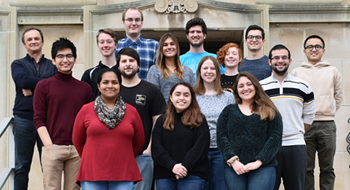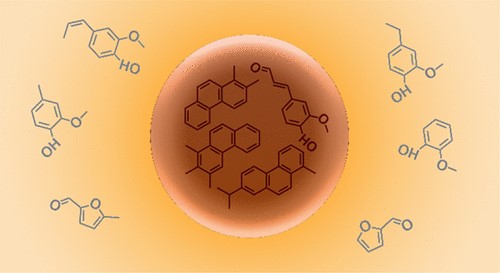Professor Alex Laskin and team receive funding to study Atmospheric Brown Carbon
2021-02-05

Professor Alexander Laskin (far left in photo) and his atmospheric aerosol chemistry research group have been awarded an international grant fostering collaboration between U.S. and Israeli institutions of higher education. The project entitled “Understanding Evolution of Atmospheric Brown Carbon” has been awarded three years of funding through the U.S.-Israeli Interagency Agreement, in which the U.S. component is funded by National Science Foundation (NSF) and the Israeli component by the U.S.-Israel Binational Science Foundation (BSF).
The project, which has been preceded by earlier collaborative efforts between the A. Laskin Group and the Y. Rudich group at the Weizmann Institute of Science (WIS) supported by an incentive grant form BSF, investigates the fundamental atmospheric chemistry of light-absorbing aerosols (also known as Brown Carbon or BrC) with an overarching goal to enable predictive understanding of the distribution, reactions, and lifetimes of BrC pollutants in the atmosphere. BrC particles are emitted from the incomplete combustion of fuels affecting global climate, air quality and human health; but our lack of understanding of their optical properties and chemical composition, makes it challenging to predict the effect of BrC on the environment.

Brown Carbon (BrC) haze event over the New York metropolitan area. (photo by A. Laskin)
The team unraveled a few of specific processes of the atmospheric multi-phase reaction chemistry that control variability and evolution of atmospheric BrC, linking its optical properties to molecular differences and ageing transformations. Their most recent paper published in Environ. Sci. Technol. highlighted yet unrecognized darkening effects of BrC aerosol resulted from gas-particle partitioning of its chromophores that transform the optical properties and composition of aged BrC aerosols. This and earlier reports by the team laid out foundation of the newly funded project.

Graphic TOC image of a recent paper “Chemical Composition and Molecular-Specific Optical Properties of Atmospheric Brown Carbon Associated with Biomass Burning” by Hettiyadura et al., 2021.
An emphasis of the new larger scale project is on the least-studied subgroups of BrC pertinent to the air pollution from biomass burning such as wildfires. The project will utilize laboratory generation of BrC proxies generated in biomass pyrolysis/burning tests and will be carried out along two synergistic tasks:
- Molecular characterization of chemical composition and light-absorbing properties of individual BrC chromophores, indicating critical components that control the light-absorption properties of BrC and their transformations (Purdue Group).
- Wavelength-dependent optical measurements of airborne ensembles of particles to determine the real and imaginary refractive indexes (RI) of the same proxies across the entire solar spectrum (315-650 nm) (WIS).
The two tasks will complement each other and will form an integrated collaborative effort, which will provide fundamental information on the composition and aging chemistry of BrC along with quantitative assessment of their light-absorption properties.